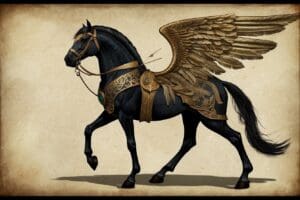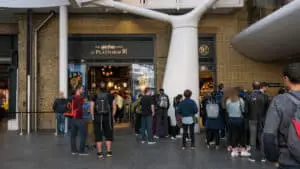The Irishman’s America: Scorsese’s Iconic Gangster Landmarks
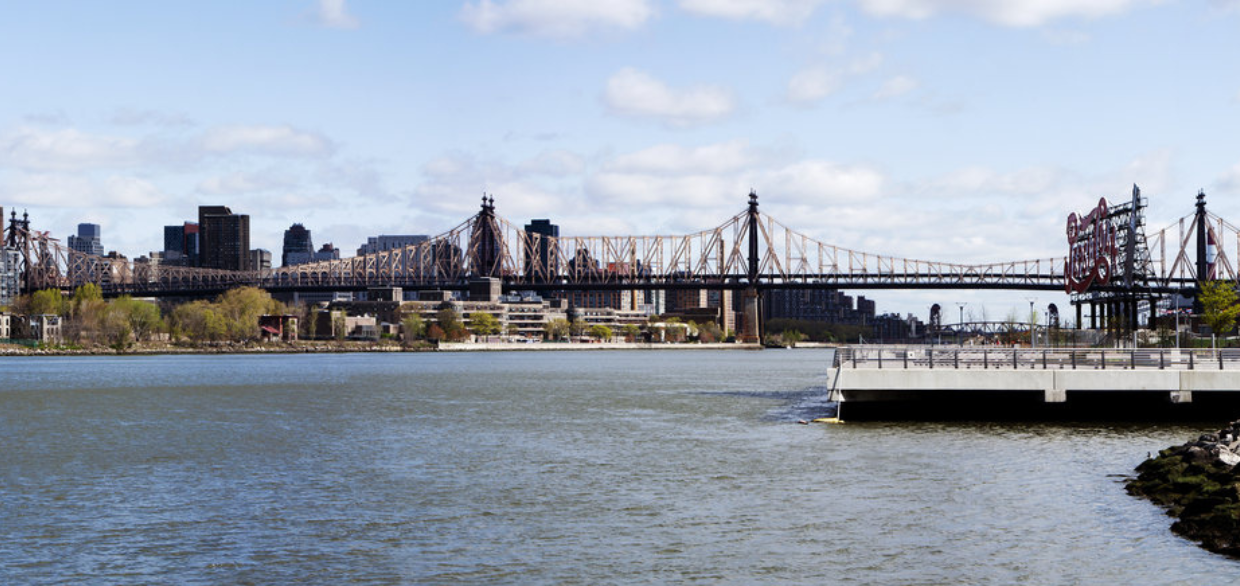
Updated On: March 06, 2024 by Maha Yassin
In The Irishman, Martin Scorsese invites us to journey through a historic America, viewed through the lens of the gangster genre. With Robert De Niro, Al Pacino, and Joe Pesci headlining, the film weaves an intricate narrative that spans several decades, exploring the interconnections between crime, politics, and society. It is not merely a retelling of mobster tales but an odyssey that scrutinises the influences of historical events on the fabric of American life.
The movie is meticulously crafted, providing insights into the evolution of organised crime alongside America’s transformative moments. The performances of De Niro as Frank Sheeran and Pacino as Jimmy Hoffa add depth and gravitas to our understanding of these complex characters, portraying the human element within a world of moral ambiguity. Scorsese’s technical prowess in storytelling is evident, as is his ability to bring the viewer into the nuanced world of gangsterism with authenticity and attention to detail.
The Concept and Development of The Irishman
In developing Martin Scorsese’s The Irishman, we journey from the pages of a compelling biography to the motion picture that deep dive into America’s gangster era through a detailed narrative.
From Book to Screen
The Irishman is adapted from I Heard You Paint Houses, a book by Charles Brandt that delves into the life of Frank Sheeran and his purported role in the disappearance of Jimmy Hoffa. The book’s vivid account caught the attention of screenwriter Steven Zaillian, who transformed these memoirs into a cinematic script. We aimed to create a faithful representation of the era, bringing to screen the intricate details of a gangster’s life and its surrounding American society.
The Role of Netflix
Netflix played a pivotal role by stepping in to finance and distribute The Irishman. Our collaboration with Netflix has been instrumental in bringing Sheeran’s complex story to a global audience. As a platform, it allowed the creative freedom necessary for the film’s unique storytelling, which includes extensive use of de-ageing technology to span the decades of the characters’ lives. We bypassed the traditional theatrical release limitations through Netflix, giving The Irishman the worldwide stage it deserved.
Casting The Irishman Icons
In The Irishman, director Martin Scorsese assembles a legendary cast that captures the essence of America’s crime history through its storied characters.
De Niro as Sheeran
We see Robert De Niro stepping into the shoes of Frank Sheeran, a reputed hitman often whispered about in the dim corners of gangster lore. His portrayal is more than a mere act; it’s the reanimation of a key figure from America’s checkered past, offering audiences a profound glimpse into the life and times of the man alleged to have changed the course of history with his actions.
Pacino as Hoffa
As the infamous Jimmy Hoffa, Al Pacino fills the screen with his character’s notorious charisma. Hoffa’s story is inseparable from the fabric of mid-20th-century American society, and Pacino delivers a stunning rendition of the Teamsters’ charismatic leader, whose disappearance remains one of the greatest mysteries.
Pesci as Bufalino
Joe Pesci’s portrayal of Russell Bufalino marks a monumental return for the actor in a Scorsese film. His interpretation is a subtle yet powerful reminder of the understated influence wielded by this real-life mobster. Pesci illustrates Bufalino’s quiet control with an intensity that contributes significantly to the film’s gravitas.
Ray Romano, Bobby Cannavale, and Stephen Graham support these icons, each breathing life into their roles with the same dedication to authenticity that has become the hallmark of Scorsese’s casting.
The Art of Storytelling
In The Irishman, storytelling takes centre stage, with a challenging narrative structure and a rich tapestry of historical context that frames the lives of infamous characters like Frank Sheeran and Jimmy Hoffa within the grand panorama of American history.
Narrative Structure
The Irishman employs a complex narrative structure that weaves together multiple timelines. Flashbacks form the backbone of this structure, enabling director Martin Scorsese to build a detailed portrait of Frank Sheeran over the decades. The use of direct address, where Sheeran speaks to the viewer, and non-linear timelines sets the film apart from traditional gangster genre narratives. This approach’s intricacy reflects the same craftsmanship Scorsese admired in cinematic classics such as The Godfather, where time is more than a mere sequence of events—it’s an emotional landscape.
Historical Integration
Scorsese integrates historical events seamlessly into the gangster narrative, grounding the sweeping tale of Frank Sheeran in the gritty reality of mid-20th-century America. Central to this melding of fiction and history is the character of Jimmy Hoffa, whose storied career and mysterious disappearance offer a gateway to explore themes of power, loyalty, and corruption. The film never treats history as a mere backdrop; instead, the rise and fall of these personalities chart the evolution of America’s political, social, and cultural landscapes, much like the gangster genre often reflects the dark side of the American dream.
Technical Mastery
Martin Scorsese’s technical prowess is evident in The Irishman and pivotal to the storytelling. Innovative methods and veteran expertise create a seamless narrative spanning decades.
De-Aging More Than a Gimmick
The use of de-aging technology becomes a tool for storytelling, allowing us to explore the characters of The Irishman across diverse periods of their lives. Through sophisticated visual effects, the actors’ appearances were transformed to be younger without the need for recasting or heavy makeup. This technology, far from a mere special effect, supports the plot’s progression and the depth of the characters, making it integral to the unfolding drama.
Cinematography and Editing
The work of Rodrigo Prieto, the cinematographer, is characterised by its authenticity and attention to detail, further immersing us in the different eras depicted in the film. Employing a variety of camera styles, Prieto captures the essence of each period, contributing to the overarching narrative. Meanwhile, Thelma Schoonmaker’s editing is precise and evocative, reinforcing the film’s pacing and the gravity of the gangster’s tale. Her collaboration with Scorsese once again proves instrumental in crafting a film that’s not only compelling but also historically evocative.
The Filming Locations of The Irishman
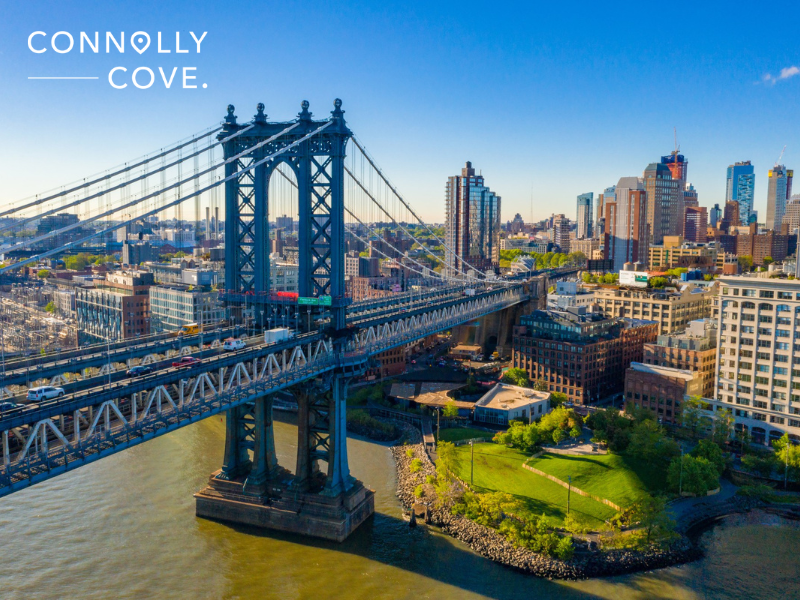
While the story takes us across Pennsylvania, Michigan, Ohio, and Florida, The Irishman was primarily filmed in and around New York. The filmmakers utilised a staggering 117 different locations to capture the expansive narrative. Let’s delve into some of the key areas:
New York State
Upstate New York played a significant role. Suffern, located in Rockland County, was the backdrop for Russ Bufalino’s neighbourhood. Viewers might recognise familiar streets and storefronts that helped establish Russ’s comfortable yet discreet world. Rockland County also provided the setting for Frank Sheeran’s nursing home, Summit Park Hospital & Nursing Care Center in Pomona. This real-life location added a layer of authenticity to Frank’s final years.
Interestingly, Frank’s fictional Philadelphia house was filmed in a quiet suburban neighbourhood in White Plains, Westchester County. This transformation showcases the creative set design and filming techniques used to transport viewers across state lines.
New York City
The vibrant energy of New York City is undeniable in the film. Brooklyn offers a diverse range of locations. Scenes were shot at the Brooklyn Navy Yard, a massive industrial complex that provided a gritty backdrop for some of the film’s more intense moments. Williamsburg, a trendy neighbourhood undergoing rapid gentrification in recent years, was transformed to depict a bygone era.
In Dyker Heights, a New Corner Restaurant on 8th Avenue restaurant was cleverly transformed into the familiar orange and yellow facade of a classic Howard Johnson’s. This transformation adds a touch of nostalgia and reminds viewers of a bygone era of American roadside dining.
Cobble Hill’s Malai Ice Cream Store stood in for the Andrea Doria Social Club, a Bufalino crew hangout. This seemingly innocuous location takes on a new meaning within the context of the film’s criminal underworld.
Long Island
Stepping outside the city, Long Island offered a variety of settings. The iconic International Brotherhood of Teamsters is not a Teamster building at all! It’s located in Hempstead, and the filmmakers cleverly used the Hempstead Town Hall to represent the powerful union headquarters. Putnam Valley provided the picturesque setting for Hoffa’s idyllic Michigan lake house. This tranquil location starkly contrasts the often-dark events of the film.
The airport scenes were filmed at the historic but now-decommissioned old control tower at Republic Airport in Farmingdale. This location adds a sense of history and authenticity to the travel and movement scenes. Additionally, several private residences and landmarks across Long Island were utilised. These everyday locations were transformed to create a believable and immersive world for the characters.
New Jersey
Although most of the film takes place in New York, a scene depicting the Schuylkill River was filmed in Philadelphia, New Jersey. This scene, where Frank disposes of weapons, adds a layer of realism by using a natural waterway.
The Cultural Impact
Martin Scorsese’s The Irishman has played a role in reinvigorating the gangster genre and its lasting effects on American cinema.
Resurgence of the Gangster Film
Scorsese’s The Irishman has contributed to a resurgence of the gangster film, a genre that has roots deep in American culture. With the film’s success, there’s been a renewed interest in classics like Goodfellas and Casino, both landmark films by Scorsese that had previously set a high bar for the genre. The Irishman, by intertwining historical events with the personal stories of its characters, reconnects audiences with the alluring yet dangerous underworld that these films depict.
Influence on American Cinema
The Irishman also underscores Scorsese’s substantial influence on American cinema. Scorsese, a revered figure in the film industry, has a canon of work that includes groundbreaking titles such as Mean Streets and The Departed, which indelibly influenced the gangster genre. Such movies have provided a gritty, stylised look at American crime figures and reflected the socio-political realities of their times, thus impacting how stories are told within the cinematic landscape. The extensive use of historical context in The Irishman weaves in the complex narrative of America’s past, echoing the societal impact that these gangster movies have repeatedly had on audiences around the world.
Historical and Political Overtones
In The Irishman, Martin Scorsese intricately weaves the threads of post-WWII America, highlighting the pivotal moments that shaped its political landscape. This film does not merely recount events; it offers a portal into the period’s striking historical and political connotations.
Hoffa’s Political Ties
Jimmy Hoffa, the infamous Union Boss represented in the film, was a figure who could not be unravelled from the political fabric of his time. His role as the Teamsters Union leader granted him substantial influence, extending beyond the union and into the corridors of power. The true history behind Martin Scorsese’s The Irishman reveals Hoffa’s purported interactions with notable figures in American Politics, affirming his embeddedness in political circles.
Intersections with American History
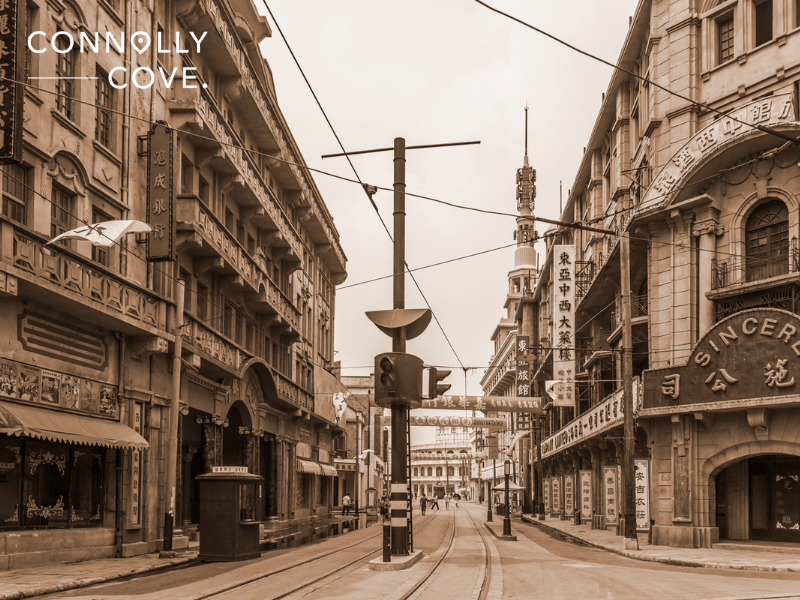
Mid-20th century America was tumultuous and intriguing, with events like the Bay of Pigs invasion casting long shadows over the Kennedy administration. The overlap of the characters in The Irishman with broader historical events suggests a deep interlinking of personal stories and national narratives. These intersections illuminate how individual lives – such as that of a Union Boss or his associates – were intertwined with the era’s seismic shifts, from the heights of JFK’s political career to the depths of Cold War anxiety.
True Crime Connections
Martin Scorsese’s The Irishman intricately weaves true crime stories with historical events, spotlighting notorious figures from America’s gangster era. Our exploration delves into real-world connections and scrutinises the film’s fidelity to historical events and personalities.
Real-Life Figures
Frank “The Irishman” Sheeran: He was a reputed hitman for the mob and a central figure in the film. Sheeran’s alleged involvement in the disappearance of Jimmy Hoffa and connections with the Bufalino crime family are focal points of the narrative.
- Russell Bufalino: As the boss of the Pennsylvania-based Bufalino crime family, he was one of the most powerful mobsters in America and is portrayed as Sheeran’s mentor in the criminal underworld.
- Angelo Bruno: Known as the ‘Gentle Don,’ Bruno led the Philadelphia crime family for two decades before his 1980 assassination.
- Joe Gallo: A feared enforcer and hitman, Gallo’s war against the Profaci (later Colombo) Crime Family marked an era of conflict and change within the New York mafia.
- Colombo Crime Family: One of the infamous ‘Five Families’ of New York, the Colombo family’s internal strife and rivalries are well-documented, serving as a backdrop for the film’s events.
Adaptation Accuracy
The film’s representation of these significant mafia figures and events is a mosaic of fact and creative licence. While the core of The Irishman is based on true stories, the level of authenticity varies. As viewers, we receive a compelling narrative that blends reality with Scorsese’s cinematic vision. The true history behind Martin Scorsese’s The Irishman dives into the debate over the accuracy of Sheeran’s claims, particularly regarding Hoffa’s murder. Meanwhile, critics have examined how the movie portrays the gritty reality of mob life and corruption, as seen in The Atlantic’s review, which comments on its reflection of American gangster history.
Scorsese’s Auteur Signature
In our exploration of Martin Scorsese’s cinematic world, we closely examine the defining characteristics that hallmark his position as an auteur. Scorsese’s films are not merely entertainment; they reflect his distinct touch, weaving complex narratives with a realistic portrayal of American society.
Themes of Hubris and Fall
Scorsese’s work often delves into the realms of hubris and fall, mainly through his depiction of American crime and ambition. Films like Goodfellas and The Irishman showcase the rise and fall of their characters, enveloping them in a world where power corrupts, and their actions lead to their undoing. Similarly, The Wolf of Wall Street is a stark exposition of excess and moral decline, portraying the ultimately self-destructive path of its protagonists.
Recurring Collaborations
Without acknowledging Scorsese’s long-standing collaborations, including Robert De Niro and Joe Pesci, our examination would be incomplete. From the gritty streets of Mean Streets to the boxing rings of Raging Bull, their partnerships have become a fundamental aspect of Scorsese’s films. These collaborative bonds extend to actors like Harvey Keitel and through films such as Silence, highlighting the versatility and shared commitment to storytelling that defines these creative relationships. The recurring Italian American themes that emanate through his work also speak volumes of his heritage and its influence on his storytelling approach. The essence of Scorsese’s gangster landmarks continues to be etched into the global cinematic landscape, resonating as a powerful signature that is undeniably his.
Reflections and Legacies
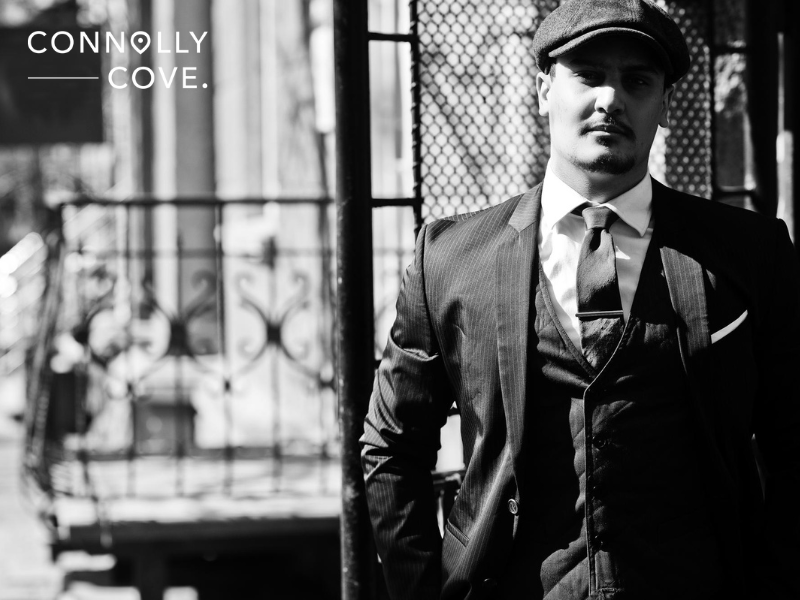
In The Irishman, we witness a profound examination of the sunset years of American gangsterism, reflecting on its enduring impact on culture and cinema.
The End of an Era
The Irishman marks a significant point in film history, representing what many see as the final chapter in the genre of gangster films that have fascinated us for decades. Martin Scorsese, known for his masterful creation of violent, stylistic narratives, teams up with iconic actors Robert De Niro, Joe Pesci, and Al Pacino to craft a story that is as much about the end of an era as the characters themselves.
This cinematic experience blends regret, cynicism, and a sense of finality, capturing the essence of an ageing generation of mobsters now confined to the quiet and reflective spaces of a nursing home rather than the bustling streets of their criminal heydays.
The Irishman’s Place in Film History
In the scope of film history, The Irishman is not merely a recounting of gangster lore but a testament to the legacies of the artists who brought these stories to life. The collective performances of De Niro, Pacino, and Pesci serve as a poignant reminder of their indelible mark on the genre. The film’s historical accuracy and the artistic vision of Scorsese situate The Irishman as a keystone in the cinematic landscape, bridging the gap between real-world events and their portrayal in the gangster narrative. Through its meticulous attention to detail and groundbreaking de-ageing technology, the film achieves a sense of authenticity that resonates with audiences, securing its place in the annals of film history.
The Irishman transcends the gangster genre with its poignant exploration of ageing and regret. The film’s expansive narrative is brought to life not just by stellar performances but also by its meticulously chosen filming locations. From the bustling streets of New York to the quiet suburbs, each location becomes a character, transporting viewers across decades and reflecting the film’s historical context. The result is a captivating cinematic journey long after the credits roll.



